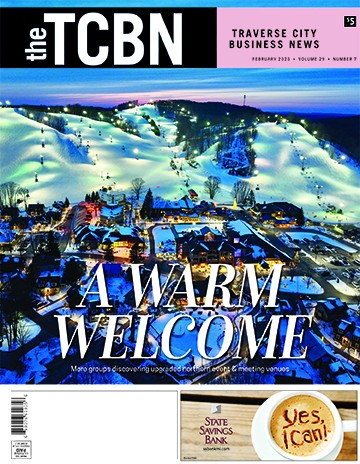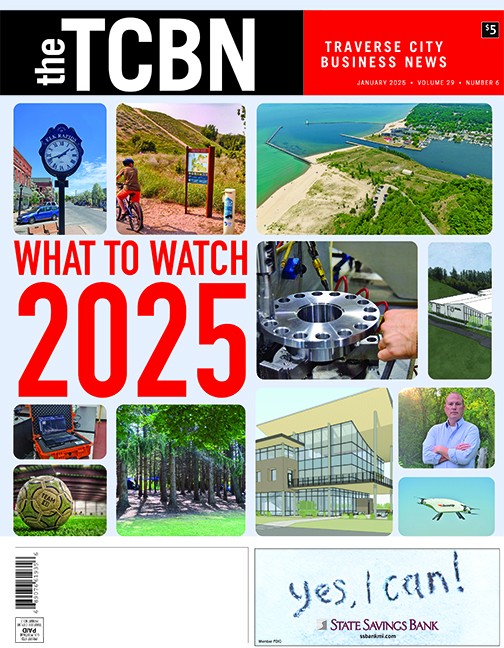'Mission Critical:' Foreign workers provide huge boost to local employers
June 2024
A federal program that allows local businesses to use foreign workers is arguably more important than ever as businesses of all stripes desperately struggle to find staff.
There are more than 40 types of visas that foreign workers can secure to work in the United States. These visas cover a wide variety of job types and intent – some cover workers who seek permanent citizenship, others those who plan to return home after working – and they help fill tens of thousands of employment gaps across the country.
Several are used in our region in a variety of applications. Many who toil in local farm fields participate in the H-2A program, for instance, which is specifically for temporary agricultural workers.
 Norman
NormanAnd while H-2A has been of considerable importance to local farmers, you’d be hard pressed to find a program more impactful to the local economy than H-2B. This program is focused on seasonal, non-agricultural work and is used heavily by the local hospitality industry to plug holes in housekeeping, food service and much more.
Hundreds of these workers from dozens of countries (more than 80 countries are eligible, according to federal guidelines) are employed in the region during the peak season. And while they work at a variety of businesses, the majority are at local hotels and resorts. Leaders there can’t say enough about how vital these workers are to their operations.
“Over the last 10 years, this has become mission critical. For many positions, if we didn’t have (H-2B workers), we would be limited in what we could offer in terms of our business,” said Tim Norman, general manager of the Grand Traverse Resort. “We’d be offering less, be it in rooms or food and beverage or other services because we simply wouldn’t have the personnel.”
And while it provides a huge boost to local businesses, the program is expensive, time-consuming, and wrought with uncertainty, particularly because businesses sometimes wait until the last minute before finding out how many workers they’ll receive – or if they’ll get any at all.
“It's extremely stressful,” said Jennifer King, senior vice president of human resources at Crystal Mountain. “It makes it very, very difficult to plan from one season to the next, not knowing if you are going to have your staff.”
Mission critical
The Grand Traverse Resort aims to fill about 100 H-2B slots per year, with a lesser amount of J-1s mixed in. The latter is for workers in programs that promote cultural exchange, with many J-1 workers being students.
That’s a big chunk of the 600-plus workers the resort needs during the peak season. But it’s necessary, Norman says, because finding local workers to fill those positions has proven to be quite literally impossible.
“We would much prefer to have full-time, year-round, local people working in these positions, but we just can't find the numbers we used to have,” he said.
It’s the same story wherever you go, particularly in the hospitality industry. And it’s getting worse, with hundreds of additional hotel rooms coming online over the next year or so.
“There's just not enough local people to do all of the work, and not just in hospitality, but all of the work in this area in general. It’s just a fact,” Crystal Mountain’s King says. “We will hire every single domestic applicant that we get, and we still will not fill the need. And that's what this program was made for, to help employers fill the
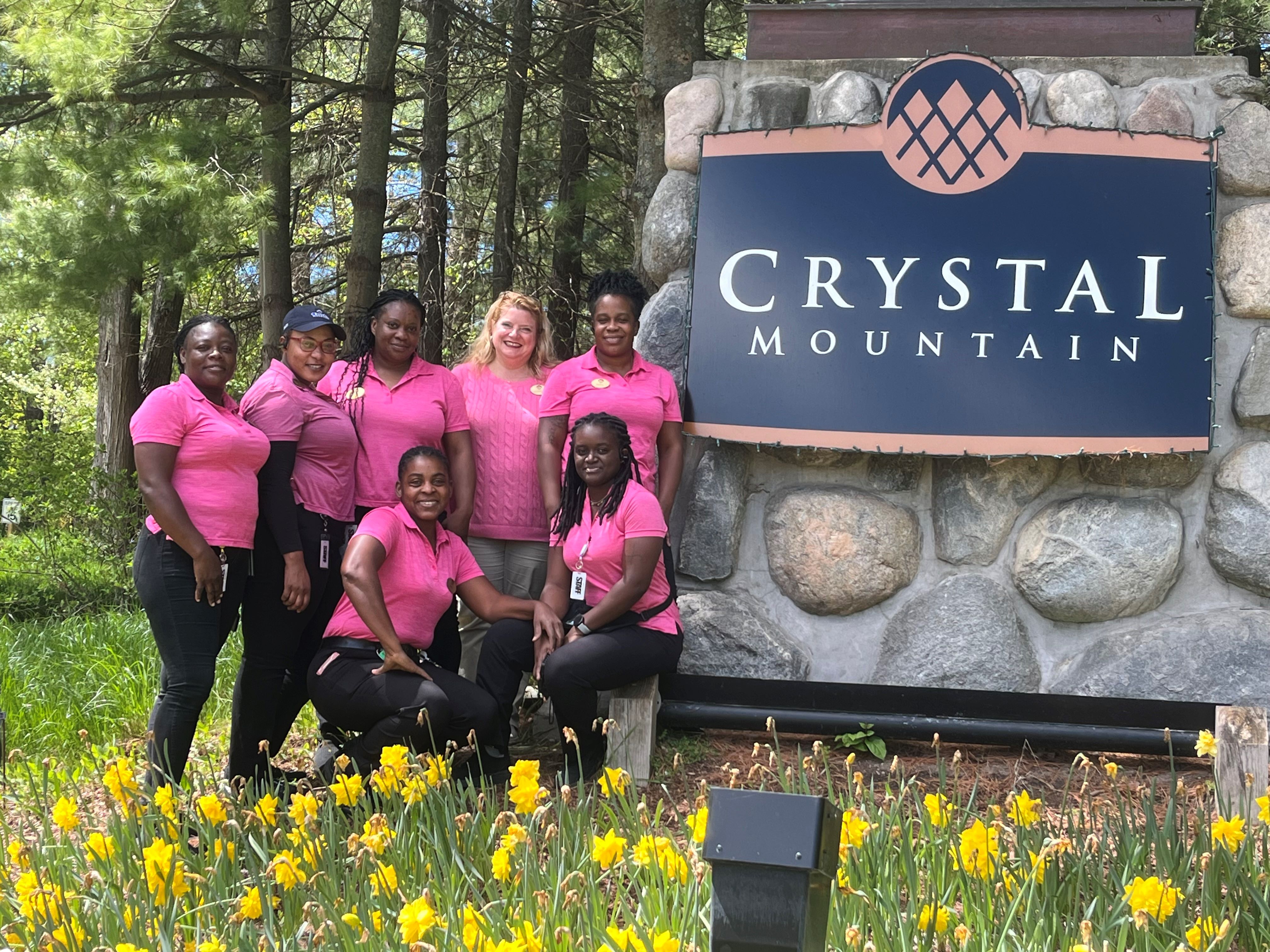 King with H-2B workers at Crystal Mountain.
King with H-2B workers at Crystal Mountain.need.”
King uses both H-2Bs and J-1s, with perhaps 20 of the former and 40 of the latter.
Over at the Delamar in Traverse City, they also make use of both, but general manager Jordan Berkowitz much prefers the H-2Bs, which he calls a “godsend.” That’s in large part because the H-2B workers usually stay twice as long as J-1s, and he says the H-2Bs have outstanding work ethic.
“The J-1 program is great and all, just the only problem is the stay-dates, because they're all students. So we only get them from June 15th to, let's say, September 1st,” he said. “May, June, and especially September are still extremely busy still up here.”
Berkowitz says H-2B workers are “the most grateful, hardworking people you’ve ever seen in your life,” and said he’d have to close portions of his hotel – or otherwise reduce service – without them.
“You wouldn't be able to operate in northern Michigan without H-2Bs. There just isn't a talent pool up here big enough,” he said. “There’s no big metropolitan area, and on top of that there’s just too many hotels, too many restaurants, too many of everything, to the point where we’re fighting for a talent pool that’s already only probably 60 percent of what we need.”
It’s not just for hotels and resorts. Restaurants use these workers, as do certain small businesses that can show a seasonal need. At Anderson’s Glen Arbor Market, owner Brad Anderson had three H-2B workers last year and hopes for five this year.
For Anderson, the program delivers quality and consistency of labor on a regular basis, something that he’s struggled to find with the local talent pool alone. This is especially true for a business that’s open seven days a week with extended hours.
“A lot of times when you hire locally, there's a lot of conflicts with camps and family reunions and all the different things that people want to do in the summer,” he said. “By investing in foreign labor, we have the employee willing to work five or six days a week, every single week… You’d rather hire local, but you just cannot get local labor that's willing to work efficiently and consistently in the high season.”
Fighting the misconceptions
Employers of H-2B workers are used to fighting misconceptions and misinformation about the program, much of it steeped in the often-inflamed rhetoric tied to immigration and anything that might impact American jobs.
“Often this subject gets lumped in with immigration, and it really shouldn't, because it really has nothing to do with immigration,” King says. “This is 100% about employers and employment.”
King points out that unlike other types of visas, the H-2B program is specifically a nonimmigrant program that sets time limits on how long workers can be in America.
“They're here to do a job and support their families. They're not looking for an opportunity to stay in America forever. They're not looking for a path to citizenship,” King says. “They're looking to come here, work their season, support their family, and then go back home to their family.”
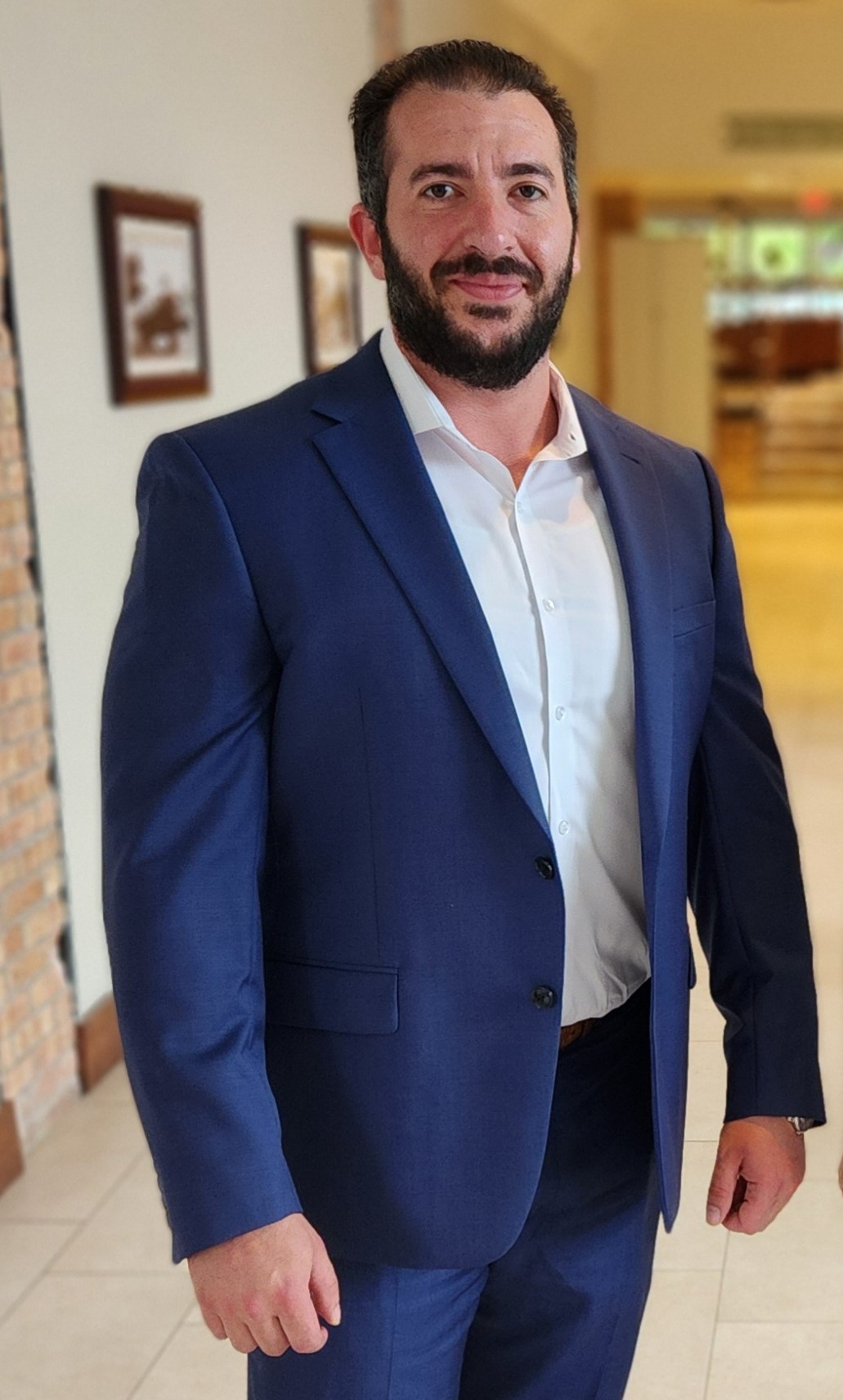 Berkowitz
BerkowitzThat said, workers can and do return year after year after time back in their home country, giving employers some valuable institutional knowledge.
“We’re very blessed in that we’ve been doing this for so long that over 50 percent of our H-2B workers, particularly for the summer, have five plus years of service with us, and some have as many as 15,” said the Grand Traverse Resort’s Norman. “We specifically ask for them and they specifically ask for us.”
Among the biggest misconceptions with the H-2B and other visa programs are that these workers are providing cheap labor or taking American jobs. Everyone involved strongly dismisses both suggestions.
“No one's saving money by doing H-2B workers. It's a very, very expensive endeavor,” said Trevor Tkach of Traverse City Tourism, which represents the local hospitality industry. “So when people talk about taking jobs or it being a cheaper alternative, that’s just not the case.”
Employers have to cover housing costs for H-2B workers, along with transportation to and from their home country. That’s in addition to application and other fees paid to the government and considerable in-house and contracted costs (most large employers use an attorney) to navigate the program.
“At the end of the day, it’s thousands of dollars per employee that you’re investing to get them here, and that’s in addition to what you have to then pay them (to work),” Norman said. “We love our foreign workers, a lot of them are like family, but I would love to get rid of the thousands of dollars I’m spending to get them here and have them work here.”
King says it’s “infuriating” to hear people assume that employers are saving money by using foreign workers when the cost data shows an entirely different story.
“By no means whatsoever is this an opportunity for cheap labor,” she said.
As far as taking American jobs, King goes back to the point made by her and others – there aren’t enough willing American workers to fill those jobs in the first place.
“There’s this perception that we’re taking away American jobs. We work really, really hard to dispel that perception, because it’s absolutely not the case, but unfortunately it’s something that’s out there,” she says.
Employers of H-2B workers first have to post the jobs and prove they can’t fill them locally, said Jim Aldrich, a downstate attorney who specializes in the program. The government reviews those postings to make sure the offered wage is fair. Employers are even required to contact past domestic employees to see if they can come back to work. All of this is designed to make sure that employers truly can’t find domestic workers for these positions, Aldrich says.
“Basically, the process is intended to protect U.S. workers,” he said. “That’s the whole reason for all of the hoops that these employers have to jump through.”
Those in the industry say that rather than harming the American worker, a regular influx of foreign support can help domestic employees by ensuring the health of their employers.
“Something that has been recognized nationally is that there are many people who work in the hospitality and tourism industry year-round, and if we don’t secure additional workers in some of these markets, those full-time jobs go away, too,” Tkach said. “Because this could be the difference between a business staying open and having to shut their doors. It’s that real.”
The bottom line? Bringing in workers from anywhere is important for an area that needs them, local leaders say.
“(The H-2B program) helps with our overall compression in the workforce by making people available to work other places and for other businesses to be able to find somebody locally,” said Whitney Waara, COO of Traverse City Tourism. “It gives us a little bit less pressure on the system. We need that support here in the overall economy or we’re just going to get crushed.”
A cap, and the associated uncertainty
The federal government caps the number of workers allowed under the H-2B program to 66,000, split evenly between those who start around April and those who start in November. The cap has remained unchanged for decades, despite pressure from industry groups to raise it.
“The numbers allowed through the cap are just not sufficient, and they have not been sufficient since the 1980s,” King said. “When there's 130,000 applications for 33,000 visas, it's really telling, in my opinion."
Norman said the Grand Traverse Resort is effectively limited from asking for more H-2B workers due to housing constraints, but he knows the demand is there.
“I can speak for other hoteliers that I've talked to, be it from Mackinac Island all the way down to Grand Rapids who use these programs, and there's no doubt we would ask for more between us all if they were available,” he said.
There is at least one bill that was recently introduced in an effort to increase the cap. Aldrich, who has seen many similar bills die on the vine, isn’t holding his breath.
“There's always talk of legislation going through and a lot of people do propose bills that just seem to go nowhere,” Aldrich says. “Nothing ever happens with the cap.”
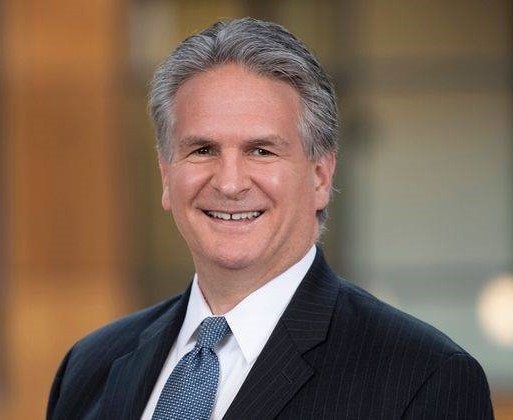 Aldrich
Aldrich Aldrich and King both believe the issue is a tough one from a political standpoint, due to the faulty misconception that H-2B workers will take American jobs.
Functionally speaking, the cap means not all requests can be filled. The government handles requests via lottery, meaning an uncomfortably degree of uncertainty year after year.
“The greatest challenge with the program is there's no guarantee…that we will fill all our positions,” Norman said. “Even if you fill out all the documentation properly, do everything correct, it’s a massive unknown. You just don't know what you will or won't get. You follow the steps and you hope for the best.”
Compounding the problem is the fact that the government also isn’t great about informing employers about the status of their requests in a timely manner.
“Even right now, we still don't know if we're going to get all of our requested staff members for this season,” Norman said.
Over in Glen Arbor, Anderson was unimpressed – to say the least – at communication from the feds about his application process.
“Last year, we had people arriving and they gave us basically 48 hours’ notice,” he said. “It was like OK, you’ve been approved, they’ll be here in two days.”












